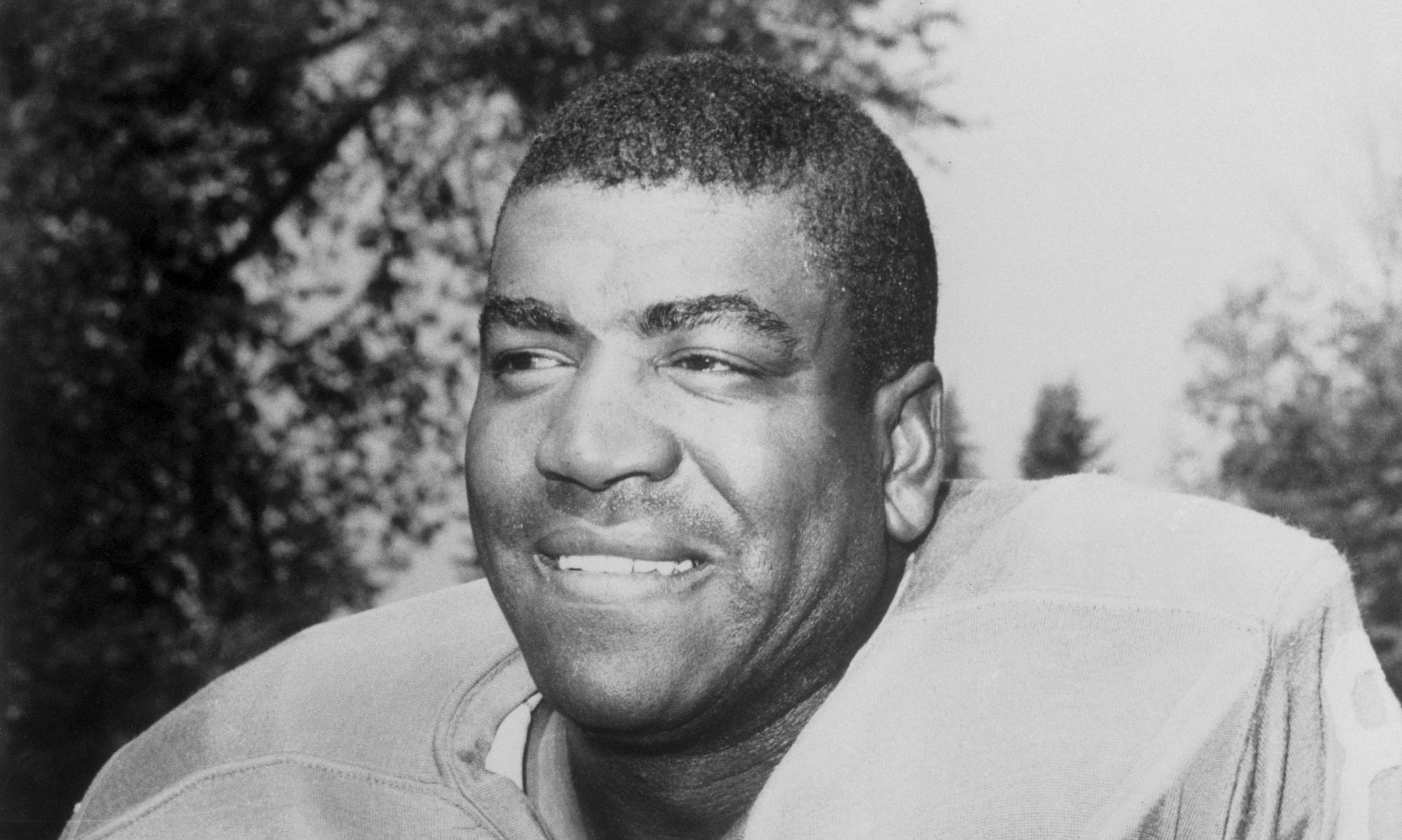Few players in pro-football history instilled more fear in wide receivers or running backs than Dick “Night Train” Lane, whose style of play was one of ferocity, intimidation and raw power. Known around the league for his open-field tackling and cat-like reflexes, Lane was single-handedly responsible for the banishment of the clothesline tackle and still holds the modern-day NFL record for interceptions by a rookie cornerback with 14.
Lanes journey to gridiron glory, however, is a story with many chapters, and it is a story that begins on April 16, 1928 in Austin, Texas. Born to a mother who was a prostitute and a father who was a pimp, Lanes life very well could have ended prematurely, long before he was able to achieve greatness on the football field.
At three months of age, he was adopted by Ella Lane, a widow with two children. She found the infant lying in a dumpster, left for dead. She rescued Richard from the dumpster and welcomed him whole-heartedly into her home. She treated him as one of her own, giving him the love and affection that had eluded him for the first three months of his life.
As Lane grew older, he developed an interest in football and spent many of Austins humid, summer days and nights participating in scrimmages against fellow neighborhood children. Worried about the safety and well-being of her son, Lanes foster mother constantly encouraged him to try other hobbies. Ever the competitor, Lane simply ignored her pleas.
Lane eventually decided to join the army and served his country as a Lt. Col. in World War II and the Korean War. Afterwards, he found himself sad and depressed and stuck in a job that he despised – lifting large sheets of oil-covered metal into bins. Frustrated with his employment situation, Lane went out to seek other work. By happenstance, he found his way into the Los Angeles Rams office and asked for a tryout. With only his scrapbook of high school and junior college football clippings, the Rams decided to take a gamble on Lane.
The offensive line was Lane’s first choice. Although his efforts and passion for the sport were right on track, would-be Hall of Famers such as Tom Fears and Crazylegs proved to be steep competition for the 6’2” Lane. He gave it his best effort and continually sought advice from Tom Fears in the locker room. Fears happened to always play a particular hit record, “Night Train.” As the book “Pro Football Hall of Fame All-Time Greats” explains, “One day, a teammate entered the room, saw Dick and blurted out, ‘Hey there’s Night Train,’ and ‘Night Train Lane” it was from then on.”
The Ram’s coach, Joe Stydahar, soon made the decision to move Lane to defense. Both his physical statue and attributes meshed perfectly for a model defensive line player. Lane burst onto the NFL scene in 1952 by setting a record for most interceptions in a single season with 14. Accomplished when the NFL played only a 12-game regular season, this record still stands today. Lane also ranks 3rd all-time for career interceptions with 68. Though his gambling style of play produced many interceptions, it was Lane’s ferocious tackling that is most memorable.
Many a receiver in the ’50s and ’60s cringed at the prospects of facing the “Night Train” one-on-one. Their fears were well-founded. Lane’s preferred technique of tackling was to “rip” a receiver down by his neck and head. This “rip” often had receivers more concerned about their well-being than the football. For this reason, the NFL eventually outlawed this “head-hunting” technique. This, however, did not diminish Lane’s ability to dominate games.
In 1969, just four years after his retirement, Lane was voted the best cornerback in the first 50 years of the NFL. Five years later he was inducted into the NFL Hall of Fame, forever remembered as one of the hardest hitters in NFL history.
Lane died from a heart attack on Jan. 29, 2002 at his home. “Night Train” left an impression on the game of football, a legacy that is noted on the pages of sports history books and felt in the derivative inspiration players of today have gained from his inspiring accomplishments. In 2001, his memory was etched into the hearts of Texans when he was inducted into the Texas Sports Hall of Fame.

